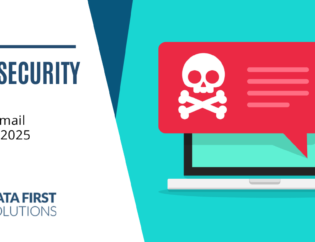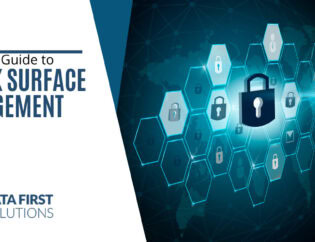
According to Statista, most reports of data breaches in Canada were a result of malicious attacks, and 48% of these data breaches occurred as a result of employee error. This is why an effective approach to data security is a top concern for organizations of all sizes.
With the increasing number of sensitive information stored online, and with the ever-increasing number of data breaches, many organizations are faced with the challenge of ensuring their data is secure and the best ways to reduce data security risk.
One approach that organizations are recommended to implement to address this challenge is threat modeling. Threat modeling is a process that involves identifying potential threats to a system or application and then taking steps to mitigate those threats.
In this article, we will explore 6 ways that threat modeling can reduce data security risk.
The Importance of Threat Modeling
Any system that stores data in a business must be designed to withstand various cyber-attacks. With cyber-attackers and hackers thinking and acting differently every day, the need for a more robust and secure form of cybersecurity is essential. Yet, this is proven difficult because establishing the right security tools and requirements needed to achieve this can be complex.
Threat modeling involves a forward-thinking approach to identify threats that are not considered threats or may be missed during audit processes. It is an essential step in ensuring adequate data security. It is a process of identifying and evaluating potential threats and vulnerabilities in an organization’s systems, applications, and data. By using this technique, businesses can create a comprehensive security plan that is tailored to their specific needs.
Threat modeling also helps identify the most critical assets that need protection, the most likely attack vectors, and the potential impact the attack will have on the business. This information helps project teams and IT departments prioritize and determine the most effective security controls needed to counter these threats, such as data breaches, insider attacks, and more, and tackle them before they arise. This approach results in your business having far more secure systems and applications.
It is important to note that without threat modeling, your business may not be able to fully understand the threats it faces or the potential damage the attack could cause. This can result in security gaps that can be exploited by attackers, leading to data breaches, financial losses, and damage to the company’s reputation.
By investing in threat modeling for your business, you are proactively addressing security risks, reducing the likelihood of successful attacks on your data security, and minimizing the impact the incidents could cause.
6 Effective Ways Threat Modeling Reduces Data Security Risks
Here are 6 ways threat modeling helps in reducing data security risks
1. Identify vulnerabilities before they can be exploited
One of the key ways threat modeling reduces data security risks is in its ability to identify potential threats and vulnerabilities in systems that could compromise the security of the business’s data. By conducting a comprehensive threat modeling exercise and analyzing the systems or applications from the perspective of an attacker, threat modeling reveals potential vulnerabilities that may have been missed or overlooked. These give businesses a better understanding of their security posture, identify the areas that need improvement, and proactively take steps to address these risks before they can be exploited by attackers.
2. Prioritize security measures based on risk
Another way that threat modeling can reduce data security risk is by helping organizations prioritize their security measures by identifying the most critical systems and the most significant threat. All these are based on the level of risks, allowing businesses to understand which systems and assets are most valuable, and which threats pose the greater risk, make informed decisions, and focus their resources on the security measures that will be most effective in reducing risk. This approach helps businesses optimize security investments and ensure that their resources are used effectively to protect their most critical data and other security measures.
3. Foster a culture of security and improve security awareness
Threat modeling helps improve security awareness among employees by raising awareness of potential threats and vulnerabilities, thereby promoting a culture of security within the organization. When employees at all levels are informed and involved in the threat modeling process, a security culture, sense of ownership, and responsibility is created, encouraging employees to be vigilant about data security. This can help to reduce the risk of human error, ensure employees are aware of the importance of data security and are taking appropriate security measures to protect sensitive data.
4. Help in developing security strategies
Since threat modeling effectively identifies the potential threats and vulnerabilities against an asset or a system, this information can help organizations develop effective security strategies and appropriate countermeasures. By understanding the potential threats and the most effective ways to mitigate them, threat modeling gives organizations the necessary information needed to develop a comprehensive security strategy that addresses all potential risks. This can help to ensure that security measures are effective and that the organization is well-protected against potential attacks.
5. Reduces attack surfaces
During the identification process, threat modeling also identifies attack surfaces. Attack surfaces or attack vectors refer to the number of entry points cyber-attackers use to gain access to the network or computer to steal sensitive data. With the help of threat modeling, organizations can implement appropriate security controls to reduce the number of entry points. This reduces system weaknesses, limits the impact of a successful attack, and reduces the likelihood of a data breach.
6. Improves incident response
Having effective incident response capabilities is essential for every business that wants to strengthen its data security posture. With threat modeling, organizations will be able to develop appropriate response plans, ensuring they are well-prepared to immediately and effectively respond to any potential security incident. This can help to minimize the impact of a successful attack and reduce the time it takes to recover from a security incident.
Implement Threat Modeling to Protect Your Data
It is time to strengthen your data security and have an IT security threat assessment. Data First Solutions can help your Toronto area business with adequate and effective threat modeling processing in order to keep your data safe and secure and withstand any attack and vulnerability.
Contact us today to book a free assessment. Book your assessment online or call 416-412-0576









